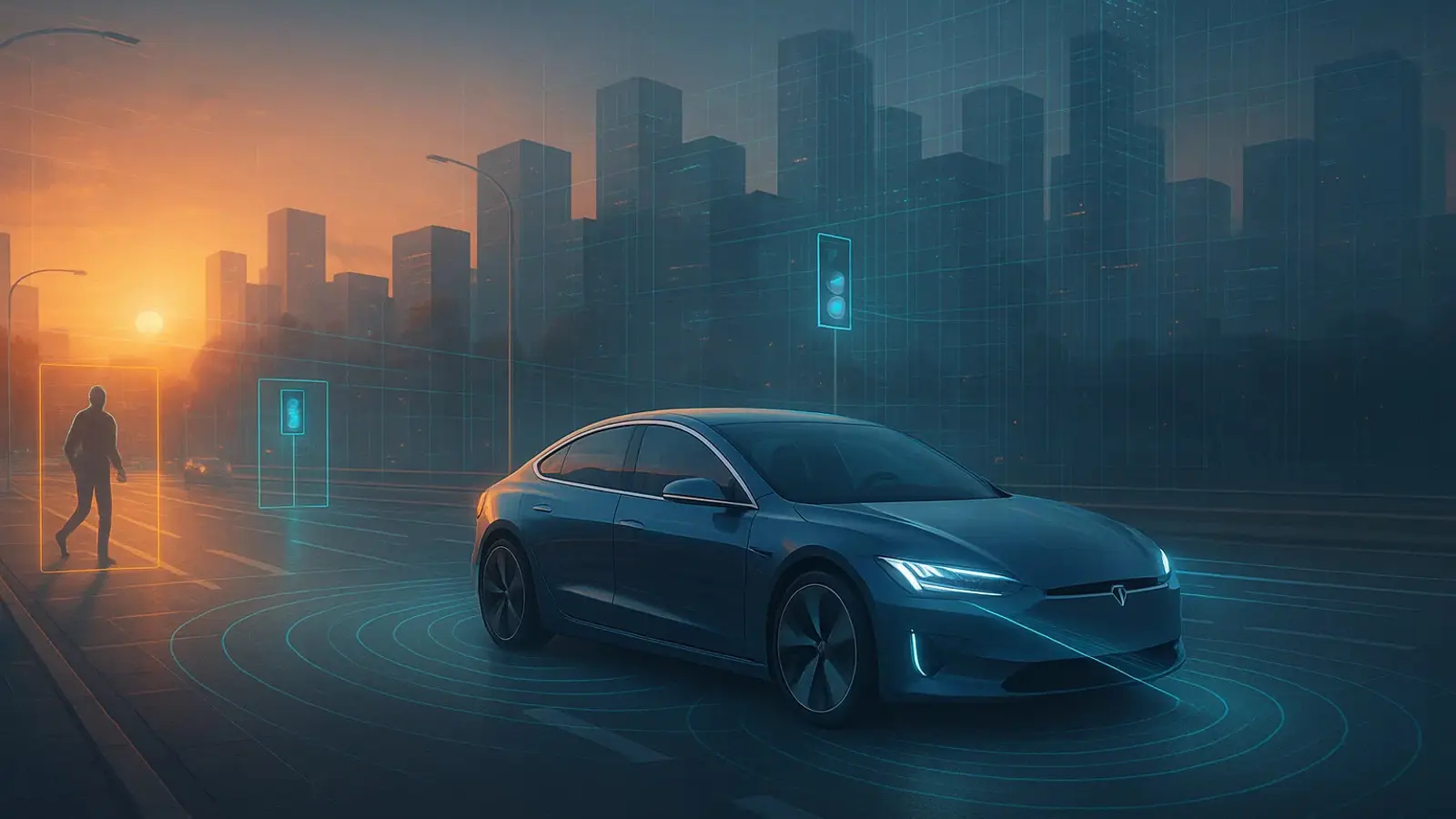Articles
How cars learn to see: machine vision and neural networks explained

How neural networks teach cars to see and understand the road, from cameras to BEV and end-to-end AI models — recent advances from Waymo, NVIDIA, and Mobileye.
The world where cars can see the road is no longer science fiction. Today, neural networks do far more than keep a vehicle in its lane or slow down for a pedestrian — they are learning to understand their surroundings. This process, known as machine vision, has become the heart of modern autonomous driving.
At the core of every vision system are the “eyes” — cameras, lidars, and radars. Each type of sensor captures the world differently: cameras detect colors and shapes, lidars build 3D maps, and radars see through rain and fog. Engineers combine these inputs into a single picture called sensor fusion, allowing the vehicle to interpret where the road ends, where a cyclist moves, and where light simply reflects from glass.
But raw data is only the beginning. The real work happens inside the neural network, which turns billions of pixels into meaning. Object detection, traffic sign recognition, and lane identification are all classic computer vision tasks essential for safety. Recent studies from 2025 show that models have become more capable of interpreting complex scenes and predicting the motion of surrounding traffic.
One concept stands out: the bird’s-eye view, or BEV. It transforms multiple camera angles into a top-down map, giving the network a planner’s perspective. This approach, pioneered by NVIDIA and Waymo, has become an industry standard because it simplifies motion prediction and path planning.
Still, engineers are debating the best architecture for artificial drivers. Traditional modular systems separate perception, prediction, and planning. In contrast, the growing “end-to-end” philosophy trains a single neural network to handle everything from raw images to steering. Waymo’s EMMA model, introduced in 2024, exemplifies this shift, and newer 2025 frameworks add transformer and generative components to improve reasoning.
The key ingredient remains data. Companies collect massive datasets of real-world driving scenarios, where every frame is labeled and verified. Reports from Waymo and Mobileye emphasize the importance of large-scale datasets and self-supervised learning, which helps models improve without human labeling. The more diverse the scenes, the better the system’s performance in rare or unpredictable situations.
Another frontier is multi-modality — blending visual, lidar, radar, and even language-based models. Researchers are now experimenting with AI systems that can explain their decisions, bridging the gap between human and machine understanding. It’s a small but important step toward transparency and trust.
Complete autonomy is still far away. Experts from Bosch and Fraunhofer point to persistent challenges: weather, rare edge cases, and computing limits. Yet progress is visible — models are learning faster, and their behavior increasingly resembles human intuition.
Machine vision is no longer just a branch of AI. It is a new form of perception — one that learns to see the road as a living, dynamic space. And perhaps, one day soon, the phrase “smart car” will be a literal truth.
2025, Oct 12 21:13


